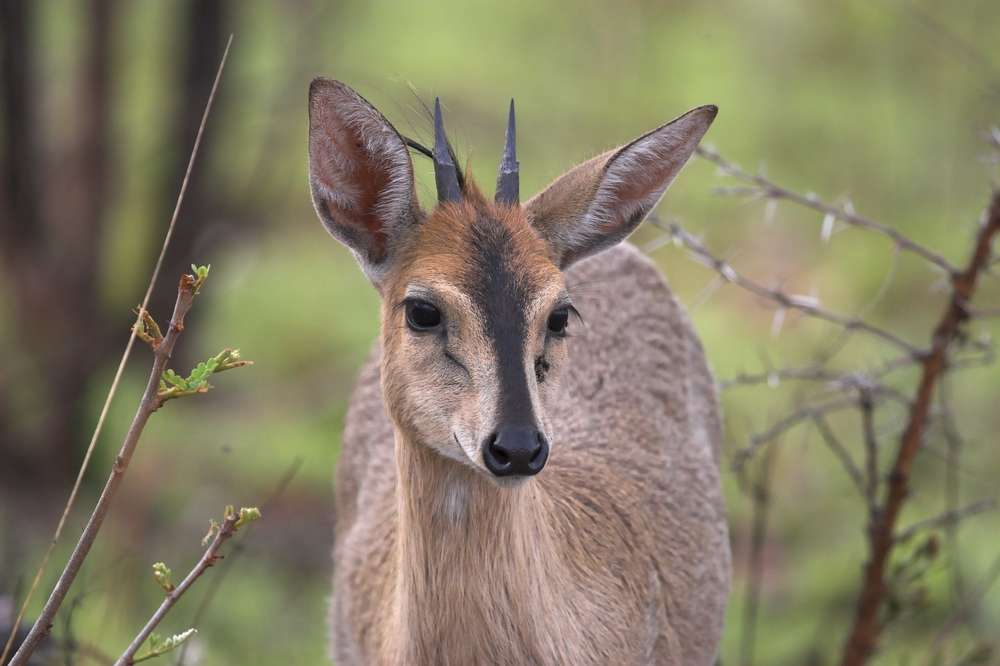Common Duiker
( grey duiker or bush duiker )
- Sylvicapra grimmia
- IUCN Status: Least Concern
- Trend: decreasing

- Kingdom: Animalia
- Phylum: Chordata
- Class: Mammalia
- Order: Artiodactyla
- Family: Bovidae
- Subfamily: Cephalophinae
- Genus: Sylvicapra
Share:
General Information
Common Duikers are one of the smallest antelopes found in Zambia. They can usually seen on the move in the early morning or evening in scrub country or in woodland. It hides during the heat of the day in patches of thick vegetation. It has a very characteristic way of running in a zig-zag fashion interspersed by plunging leaps.
Description
There coats can be either grey or brown depending on the subspecies and region. The females are generally larger and heavier than the males. Horns are only found on the male duiker.- Shoulder height: 50 cm
- Weight: 12 to 25 kg
Ecology & Behaviour
The common duiker has a wide diet which includes browsing for leaves, flowers, fruits and tubers, and also eating insects, frogs, small birds, mammals, and even carrion. If there is plenty of vegetation to browse, the common duiker can go without water for long stretches as it gets the water from fruits and vegetation. In the rainy season they can often go without drinking water as they get most of it from fruits. They often eat fruits together with monkeys. Common duikers are active at all hours but when near human settlements or predators they become more nocturnal. Males are territorial and smear gland secretions on rocks and branches to mark their territories which is their preferred resting places are generally on elevated ground, where they can observe their territory. Females, by contrast, prefer deeper cover. The overall success of this species stems from its ability to inhabit a wide variety of habitats.
Conservation
It is listed as a”Least concern” antelope on the IUCN Red list.
Distribution & Habitat
Generally, they are found in habitats with sufficient vegetation cover to allow them to hide such as savanna, hilly areas and including the fringes of human settlements.
No donation to this project yet.
| M | T | W | T | F | S | S |
|---|---|---|---|---|---|---|
| 1 | 2 | 3 | 4 | 5 | 6 | |
| 7 | 8 | 9 | 10 | 11 | 12 | 13 |
| 14 | 15 | 16 | 17 | 18 | 19 | 20 |
| 21 | 22 | 23 | 24 | 25 | 26 | 27 |
| 28 | 29 | 30 | 31 | |||


